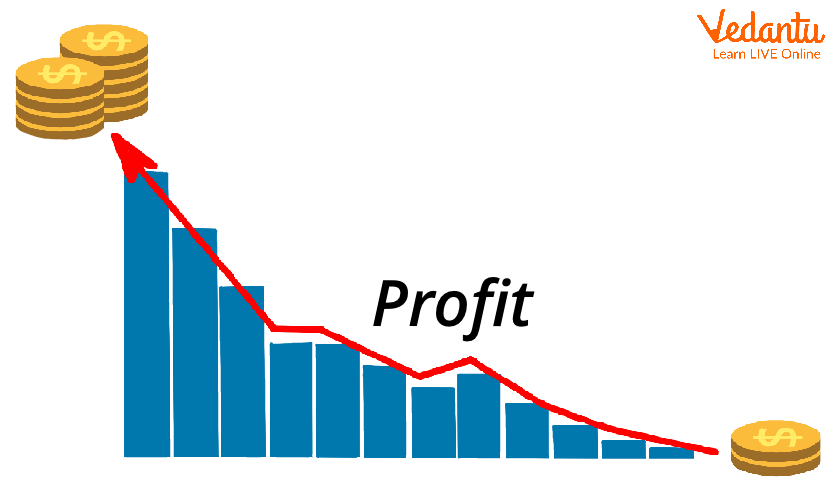




Method of Adjustment of Capital Value
A capital adjustment is a monetary transaction that neutralises the impact of inflation on a corporation by compensating for fluctuating costs of inputs and expenses. Items like trade debtors, accounts receivable, and prepaid costs are included here, but stocks are not.

The Concept of Capital Adjustment
When a new partner is admitted, the existing partners may decide to change their capital contributions to reflect their agreed-upon profit allocation. In this case, if the new partner's capital is known, it may be utilised as a starting point for determining the adjusted capital contributions of the existing partners. After making all necessary adjustments for goodwill reserves, revaluing assets and liabilities, etc., we should compare the resulting capitals to their original capitals. The partner whose capital is short will contribute the funds to make the difference, while the partner with a surplus will withdraw the surplus.
Difference between a Revaluation Account and a Memo Revaluation Account
Percentage Change in Acceptance Due to Capital Investment

Modification of Entrance Requirements Based on Financial Resources
Capital adjustments are to be made when a new partner is admitted under the partners' agreement. The capital restructuring is accomplished by reallocating the partners' contributions to the capital account following their revised profit-sharing agreement. It is done by recalculating prior earnings in the Goodwill Revaluation Account and then applying the result to the Capital Accounts of the outgoing partners.
Then, the capital contributions of the remaining partners are reallocated as follows:
The New Partners' Capital Contribution will determine the needed capital amount.
The quantity of capital is determined using the Old Partners' Capital Account as the foundation for the computation.
The revised Profit-Sharing Ratio is then used to recalculate each partner's Capital Account.
Capital Adjustment through Journal Entries
(i) For excess capital withdrawn by the partner
Partners’ Capital A/c Dr. XXXX
To Cash/Bank A/c XXXX
(Being excess capital withdrawn by the partners )
(ii) For the amount of capital introduced by the partner
Cash/Bank A/c Dr. XXXX
To Partners’ Capital A/c XXXX
(Being adjustment made for transferring the balance of revaluation a/c to retiring partners’ capital/current a/c).
Conclusion
To construct the revaluation account, we must recalculate the values of all assets and liabilities at the time of the admission of a new partner. Since the value of certain assets rises while others fall over time, the market value of an organisation's assets may be different from its book value. Liabilities may also have different market values from their book values. In addition, the books have to reflect any assets or liabilities that have been overlooked throughout the recording process.
FAQs on Memorandum Revaluation Account and Capital Adjustment
1. What is a Memorandum Revaluation Account in partnership accounting?
A Memorandum Revaluation Account is a special account prepared to record the effect of revaluing assets and liabilities without actually altering their values in the firm's books. It is used when partners wish to see the financial impact of value changes for an event like admitting a new partner, but want the assets and liabilities to appear at their original values in the new balance sheet.
2. What is the main difference between a Revaluation Account and a Memorandum Revaluation Account?
The primary difference lies in their purpose and effect on the firm's books. A standard Revaluation Account records permanent changes, and the revised asset/liability values appear in the new Balance Sheet. In contrast, a Memorandum Revaluation Account records temporary changes; its effect is nullified so that assets and liabilities are shown at their original values in the new Balance Sheet.
3. What does 'adjustment of capital' mean when a partnership is reconstituted?
Adjustment of capital is the process of altering the partners' capital balances to align with their new profit-sharing ratio. This ensures each partner's capital contribution is proportionate to their stake in the reconstituted firm. The process typically involves:
- Determining the total required capital of the new firm.
- Calculating the required capital for each partner based on their new ratio.
- Comparing this with their actual adjusted capital (after all other adjustments).
- Partners then either bring in cash to cover a deficit or withdraw cash for any surplus.
4. Why would partners choose to prepare a Memorandum Revaluation Account instead of a regular one?
Partners opt for a Memorandum Revaluation Account when they want to ensure fairness by accounting for asset value changes at the time of reconstitution, but simultaneously wish to avoid permanently altering the historical cost of assets and liabilities in their financial statements. It allows them to credit old partners for appreciation (or debit for depreciation) without changing the firm's official Balance Sheet figures going forward.
5. How does the two-part process of a Memorandum Revaluation Account work?
The account is prepared in two distinct parts to cancel out its own effect on the book values:
- Part 1: Functions like a normal Revaluation Account. The net profit or loss from revaluing assets and liabilities is calculated and transferred only to the old partners' capital accounts in their old profit-sharing ratio.
- Part 2: All entries from Part 1 are exactly reversed. The resulting loss or profit (the opposite of Part 1's result) is then transferred to all partners' capital accounts, including the new or incoming partner, in their new profit-sharing ratio.
6. How is the total capital of the new firm determined during capital adjustments?
The total capital of the newly constituted firm is typically determined using one of two methods:
- Based on the New Partner's Capital: The new partner's contribution is used as a base. For instance, if a new partner brings ₹50,000 for a 1/4th share, the firm's total capital is calculated as ₹50,000 × 4/1 = ₹2,00,000.
- Based on Old Partners' Adjusted Capital: The final adjusted capital balances of the old partners are combined, and this total is used to proportionally determine the firm's total capital.
7. What are the standard journal entries for making capital adjustments?
The journal entries depend on whether a partner has a surplus or a deficit after calculating their required capital:
- For bringing in cash to cover a deficit:
Cash / Bank A/c Dr.
To Partner’s Capital A/c
(Being the deficit amount brought in by the partner) - For withdrawing cash due to a surplus:
Partner’s Capital A/c Dr.
To Cash / Bank A/c
(Being the surplus amount withdrawn by the partner)
8. What is the impact on the accounting equation when a Memorandum Revaluation Account is used?
The net impact on the accounting equation (Assets = Liabilities + Capital) is zero. Although the Memorandum Revaluation Account temporarily records notional profits or losses, its two-part process is designed to be self-cancelling. The first part adjusts old partners' capital, and the second part reverses this adjustment across all partners. The final Balance Sheet reflects the original asset and liability values, preserving the initial equation before revaluation.























